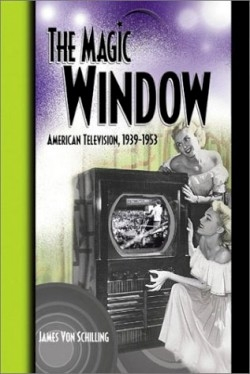The Magic Window
American Television, 1939-1953
When television made its ballyhooed debut for the general public at the 1939 World’s Fair in New York, could anyone have dreamed how much it would grow in such a relatively short time? It quickly developed from a commodity that only few could afford or take advantage of (remember, some parts of the country weren’t even wired for electricity at the time), to a fixture in the world community. The author, a professor of English and an expert in pop culture, covers the entire television spectrum, from its infancy through its adolescence.
While early TV programs and stars may be of the most interest to readers, they are not necessarily the most important aspects of the evolution of the medium. As dry as they might seem, technical matters, licensing, patent battles, and government involvement are all essential parts of the biography of television.
As far as the on-screen story, it’s not only the entertainment value of such early performers as Milton Berle, Syd Caesar, Lucille Ball, and Howdy Doody that defined the medium. Television showed us the American system at work, through broadcasting political conventions, Crime Commission meetings, and the House Un-American Activities Committee hearings. Indeed, politicians found that they could no longer get away with giving a good speech-they now needed to be “telegenic” as well.
In the fledgling days, performers also had to learn how to adapt to television. Not all succeeded; many stars of radio could not contend with the demands of performing live, unused to memorizing their lines. Others were not used to having their material censored. With the emphasis on acceptable content, one wonders what the early television community would have thought of today’s product, which includes frank subject matter, partial nudity, suggestive dialogue, and language that would have those prim and proper mavens reaching for the smelling salts.
Von Schilling keeps his entries brief, perhaps as a nod to the diminished attention span of a generation of readers raised in the TV era. Nevertheless, The Magic Window is a welcome “lite” reference for those interested in the history of broadcasting.
Reviewed by
Ron Kaplan
Disclosure: This article is not an endorsement, but a review. The publisher of this book provided free copies of the book to have their book reviewed by a professional reviewer. No fee was paid by the publisher for this review. Foreword Reviews only recommends books that we love. Foreword Magazine, Inc. is disclosing this in accordance with the Federal Trade Commission’s 16 CFR, Part 255.

